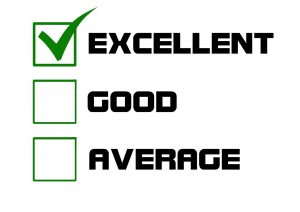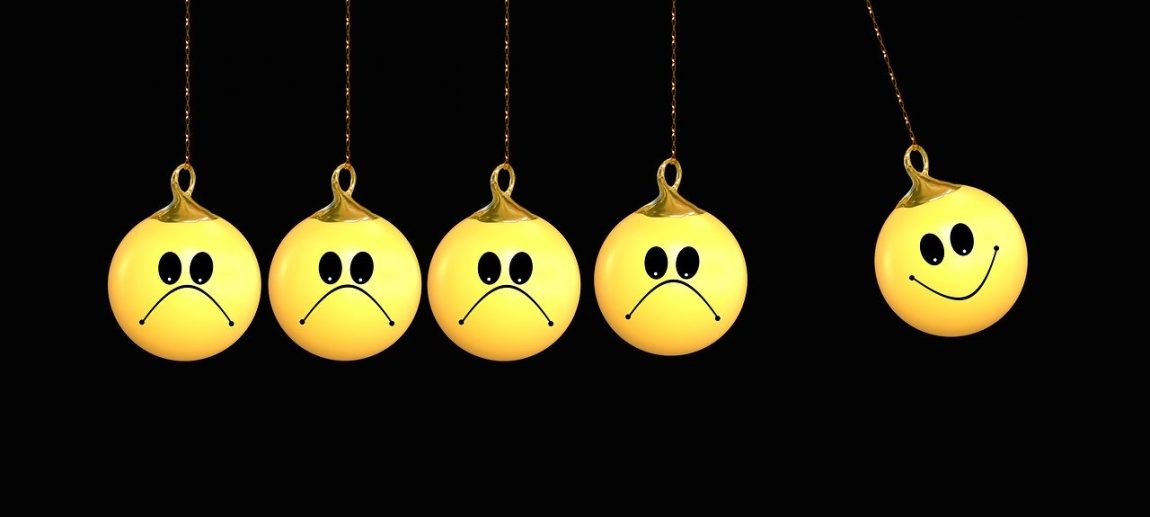You are the average of the five people you spend the most time with.
– Jim Rohn
I’ve heard countless references to this Jim Rohn quote over the years and have frequently brought it to mind in times of contemplation of how my life is affected by the cluster of people around me. While there certainly appears to be truth in Rohn’s statement, does the math actually support it?
The Law of Averages is a commonly held belief that that a particular outcome will play out at a frequency proportional to its probability over a certain period of time.
Depending on context, including sample size and length of time a certain behavior is observed, assumptions can either be based on common sense or a complete misunderstanding of the principles of probability.
Consider a coin toss: heads or tails is a 50/50 probability, right? If you are placing bets on the likelihood of heads or tails in a series of 10 tosses and the first 5 fall on heads, the Law of Averages presumes that chances are much higher that tails will appear on the next toss, even though each toss still has 50/50 odds, independent of the other results. At the end of 10 tosses, if the results are actually 8 heads out of 10, you may feel like the game is rigged. In fact, this is a common occurrence known as “Gambler’s Fallacy,” and illustrates the importance of the Law of Large Numbers. Without it, the Law of Averages is not a mathematically grounded principle.
The Law of Large Numbers states that an experiment must be repeated many times under identical circumstances before the sample mean will reflect the theoretical mean. In the case of a coin toss, in order to achieve a 95% probability that results reflect 50/50 odds, the sample size must be larger than 1000.
In the real world, it’s very difficult to isolate the probability of a particular outcome from the many variables of external influence. Human behavior and social groupings are complex subjects to study, and some surprising scientific statistics have the potential to dramatically shift your social paradigms.
The Law of Averages is a thought-provoking tool when applied to our social circles. On the surface, it’s a basic concept: you are the average of the 5 people you spend the most time with, whether that be in finances, fitness, social behaviors, interests, beliefs, and more. It’s commonly accepted that we have a tendency to develop and reflect characteristics of people with whom we frequently associate – particularly close friends and romantic partners.
Rohn’s words are solid, though long-range studies suggest that this concept of relationship averages is an oversimplification of the influence that actually comes from a much broader social network of contacts once and twice removed. Scientific research shows that our chances of assimilation extend out to people we don’t know, up to 3 degrees of separation. The trends observed in larger sample sizes also reinforces the Law of Large Numbers.
Several years back, a pair of researchers mined the extensive data set of the Framingham Heart Study, which followed an interconnected social network of more than 12,000 people over the course of 32 years spanning from 1971-2003, and they discovered some incredibly interesting results that led them to conclude that a person’s likelihood of developing obesity can be influenced by second and third degree associations.
So they started analyzing the data to see what the effects of family members and friends was on something fairly easy and objective: obesity. According to their results, if a friend of yours becomes obese, you yourself are 45 percent more likely than chance to gain weight over the next two to four years. More surprisingly, however, Christakis and Fowler found that if a friend of your friend becomes obese, your likelihood of gaining weight increases by about 20 percent — even if you don’t know that friend of a friend. The effect continues one more person out. If a friend of the friend of your friend develops obesity, you are still 10 percent more likely than random chance to gain weight as well.
– David Burkus in Friend of a Friend
I spent this past weekend devouring Burkus’s recent book on networking and the science of social ties, and was fascinated by compelling evidence that highlights the potential that lies in weak and peripheral connections within community clusters and brings to light how interconnected we all are. In many cases, we are more closely linked than the commonly referenced phenomenon Six Degrees of Separation, particularly in the modern age of social media networks. In fact, people who have a Facebook account are generally within 4.2 degrees of separation of one another.
Our identities reflect larger trends in our surrounding communities. As much as I like to think of myself as a person who marches to the beat of my own drum, I can certainly reflect back on ways my taste and opinions have been shaped by those around me, particularly in the areas of music, food, and fashion. Who and what informs your personal style? Your likes and dislikes? Substantial influences come from a handful of people in your immediate network. If you aren’t thoughtful about the environment you place yourself in, the sorts of things that you focus your time and attention on may not actually be in alignment with the person you aspire to be.
The social cluster in which you reside may be holding you back or clouding your perspectives, however I’m not necessarily saying you need to categorize social connections as positive or negative. An alternative approach is to explore how your network ranks on a continuum of homogenous to diverse.
I learned a new word over the course of reading Friend of a Friend that has shifted my awareness towards the importance of continuing to embrace diversity in my network. Homophily is a term used to describe a common tendency illustrated by the adage “birds of a feather flock together.” As I mentioned last week in my exploration of identity, I often find myself interacting with polar opposite groups of people, which I credit with broadening my perspective and understanding of a wide range of viewpoints.
This is a highly political year, and our American culture is increasingly polarized by party lines. Burkus’s chapter on Resisting Homophily went into surprising detail about how populations have migrated over the past three decades to shift competitive voting districts into landslide neighborhoods.
Take San Francisco for example: in 1976, 44% of voters sided with Republican Gerald Ford, but by 2004, Republicans only represented 15% of local voters. The number of voters remained relatively the same, but Republicans moved out and were replaced by Democrats. This trend has been observed across the country as neighborhoods are becoming more homogenized; it also serves as a possible explanation for how Republican Donald Trump was able to surprisingly take the election in 2016 by winning Michigan, Ohio, Pennsylvania, and Wisconsin.
In keeping with my desire to avoid labels and assimilation, I’m a registered Independent voter who can swing right or left, up or down, depending on the issues at hand. And that’s as far as I care to go with a discussion of politics at the moment, as my main point here is to illustrate the concept of homophily and the benefit of expanding one’s understanding of people who think different than you.
Many artists seek out inspiration from other creators, but if they aren’t careful, they run the risk of becoming a copycat instead of creating fresh, original work from a unique perspective. It’s helpful to explore and get an idea of what’s out there in the world just as it’s beneficial to pick and choose who and what influences you, but sometimes you have to unplug and block out distractions altogether to really get clarity on who you are, what inspires you, and which opinions are truly your own. Nature is great for this, and so is meditation. Slow down. Get still and quiet. Embrace periods of solitude.
If you don’t know how to access different influencers in your immediate circle of 5, then try reallocating your time and attention to books and other media that are in closer alignment with your aspirations as well as feed your curiosities. In our modern digital age, you can spend time with mentors who exist outside of your social clusters and expose yourself to a myriad of different ways of thinking.
I challenge you to examine your environment: you can be intentional about building a social network that reinforces the identity you aspire to create or develop. Remember, habits and identity are intertwined: one reinforces the other in a circular manner. It’s up to you to choose who you associate with regularly, and what sort of social networks you cultivate. We all may be swayed by the Law of Averages, but that doesn’t mean you have to be an average person.


